The road follows the West Prong of the Little Pigeon River in the western part of the park.
Below is the view from the Morton Overlook, named for mayor and park supporter, Ben Morton.
President Franklin D. Roosevelt dedicated the Great Smoky Mountains National Park at this site, the Rockefeller Memorial, in 1940 although the park was established six years earlier. The memorial commemorates those who helped establish the park, in particular, John D. Rockefeller's mother who donated $5 million of the $12 million used to purchased most of the parks 520,000 acres. Thousands of people gathered for the dedication.
The Appalachian Trail that runs from Georgia to Maine (2,150 miles and 14 states) is next to the memorial. As you can see in the sign, Maine is 1,972 miles from this point. During the 1930s, the Civilian Conservation Corp, built this trail through the Great Smoky Mountains. The CCC was created in 1933 and employed more than 3 million men 18 to 25 years old. They built roads, campgrounds, trails, and buildings in many of our national parks. Many of the shelters built by the CCC are still in use today along the Appalachian Trial.
The Newfound Gap is located between Tennessee and North Carolina. Here are two photos of us straddling the state line! In the first, Sadie is in NC and John is in TN. I have one foot in each state. You can also see the beautiful Oconaluftee Valley from the overlook here.
I love the colorful berries on the mountain ash trees. They grow in abundance here. The berries must be cooked to be edible by humans, but is a food source for birds as the weather gets colder.
Take the right turn onto Clingmans Dome Road after this stop to travel 7 miles to the Observation Tower at Clingmans Dome, the tallest mountain in the Great Smokies at 6,643' and the 3rd tallest east of the Mississippi. There is a steep, 1/2 mile, paved trail to the Observation Tower at the top (ascent of 330'). The CCC built a wooden, enclosed tower at this location in the 1930s. That structure was replaced with the current 45' circular observation deck. The Clingmans Dome Visitor Center was closed for renovations when we visited.
You can see for 100 miles from the observation tower including 5 states. Interpretive signs identifying the mountains seen in the distance are located around the deck.
The dead trees seen in the forests are Fraser firs that grow at the highest elevation of the Smokies. An insect, the balsam wooly adelgid, inadvertently introduced to the US from Europe in the 1950s, have killed nearly 70% of the park's mature fir trees.
The Appalachian Trial runs along the ridge here as well and is the highest point of the entire 2,000+ mile trail.
The Cherokee worked the land and hunted these forests for centuries before the Europeans arrived. They were forced westward when the federal government enacted the Indian Removal Act of 1838. Known as a the Trail of Tears the majority of the Cherokee were relocated to Oklahoma. Today, there is a small Cherokee Reservation around the town of Cherokee, NC.
The view from the Oconaluftee Valley overlook was fantastic, one of my favorite!
The Mingus Mill (1886) was the largest gristmill in the Smokies with a wooden flume 200' long. It was equipped with a small mill turbine, instead of a water wheel, to provide the power to run the machinery. The mill was used to grind corn into meal and wheat into flour for the nearby mountain community of Mingus Creek. Customers were charged a toll of 1/8 of the grain they brought to the mill.
The Oconaluftee Visitor Center is located at the eastern border of the park in North Carolina.
There are many interesting exhibits that we spent some time exploring. Below are several about the hard lives of women in the Smokies; the many stills in the mountains to make whiskey from corn (particularly profitable during 1919-1933, the prohibition years); and the work of the Civilian Conservation Corps here.
Also, located at the Oconaluftee Visitor Center is the Mountain Farm Museum. The historic buildings were moved here from other areas of the park by the National Park Service in the 1950s. John Davis completed building this house in 1900. He lived here with his wife and five children. The kitchen was a separate room at the rear of the house. I am always interested to learn more about how the women handled all of their chores including food preparation for her family.
Most of the buildings here related to one of the most basic needs of the families that lived in the Smokies, preserving food. It was a constant chore to keep the woodshed full. Wood was used for heat during the cold weather and for cooking year-round. The ashes were also used to add nutrients to the garden soil and to produce lye for soap-making. Also, the meat house is located near the house. Hogs were butchered in the fall and was the primary source of meat. A smoky fire that lasted a week or longer was used to smoke the pork or salt was used to cure it. It was stored in the meathouse through the cold months of the year.
Many farmers kept hives of bees to produce honey for their use and, sometimes, to sell. Hollow black gum trees were cut, a wooden bottom, and hinged top added to created the beehives. They were called beegums locally.
Most farms had chickens that were kept in chicken houses or simply allowed to roam free. In addition to the eggs and meat provided by the chickens, their feathers were used for mattress and pillow stuffing. Apples were the most common fruit found in mountain communities. They were eaten raw and used to make lots of other edibles like cider, vinegar, apple sauce, pies, apple butter, and sometimes dried to preserve them through the winter months. Below is a chicken house and an apple house.
Corn was the most important crop on a mountain farm and almost every one had a corn crib to store it. It was not only food for the family, but also the livestock. The shucks were used to stuff mattresses, weave chair seats, make hats, rugs, dolls, and more. Below is a corn crib that also served as a tool shed. There were usually located close to the garden or fields.
The barn was a stable for the livestock on the farm. Most of the feed for animals was stored in the loft.
These adorable pigs, Honey Baked and Maple Bacon, were in a pen next to the barn. They are of the historic Gloucestershire Old Spot breed (white with black spots). Hogs were the main source of meat in the mountains. They roamed freely to forage their own food, but several were captured, fattened up, butchered, and used for meat, lard, and soap each year.
A reliable water source was crucial to every farm. On display is a spring house where water from a spring was channeled through it via a wooden or stone trough. Perishables could be kept cool by the flowing water.
The Farm Museum provided so much insight into the daily lives of the families that lived in the Great Smokies. While it seems like so much hard work, the land could provide almost everything needed to survive and thrive here.
We made the return trip (31 miles) along the Newfound Gap Road to the western boundary of the national park in Gatlinburg, TN.
For additional information about the Newfound Gap Road, Clingmans Dome, or the Farm Museum, check out the park's website at www.nps.gov/grsm.

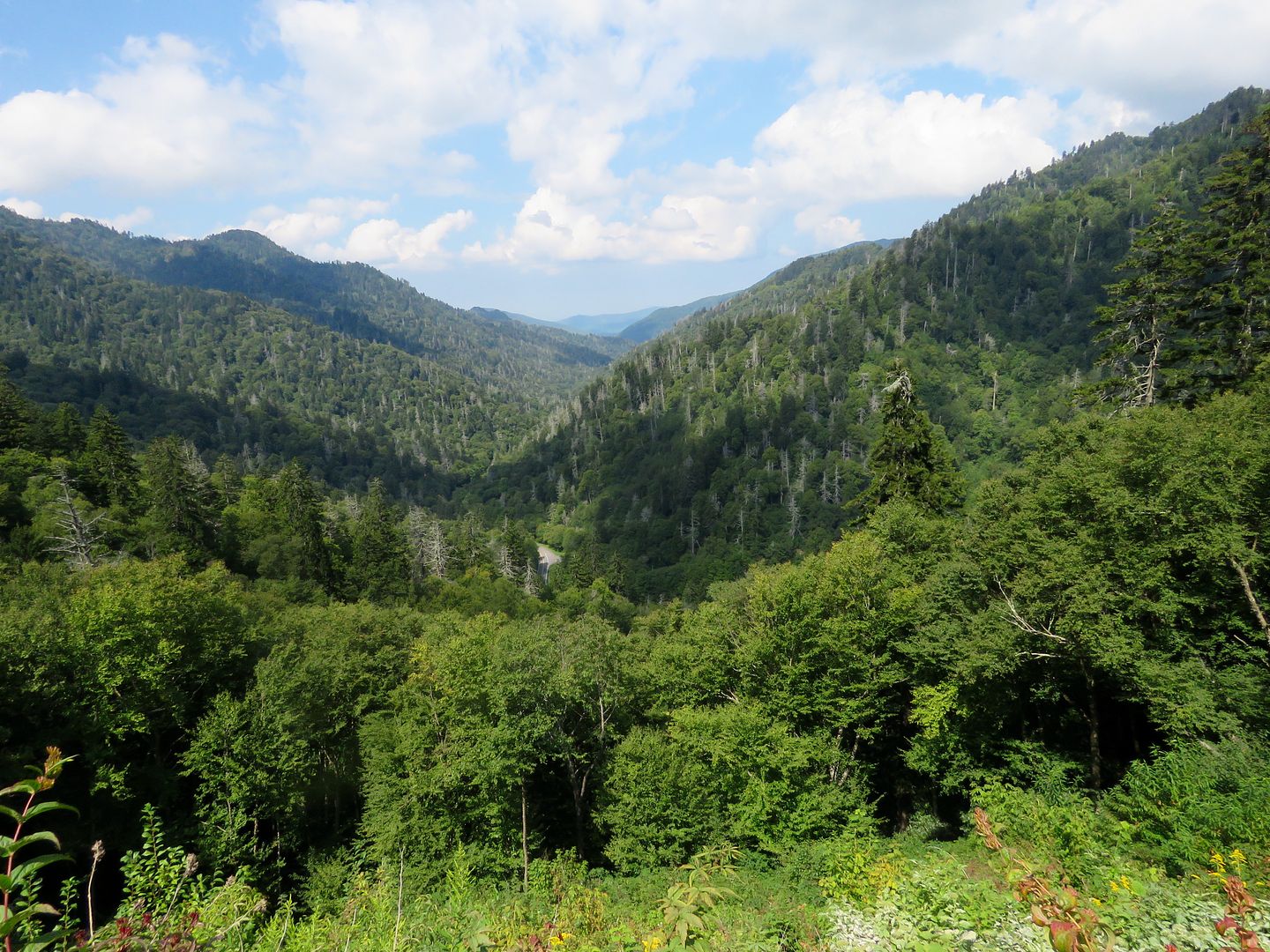
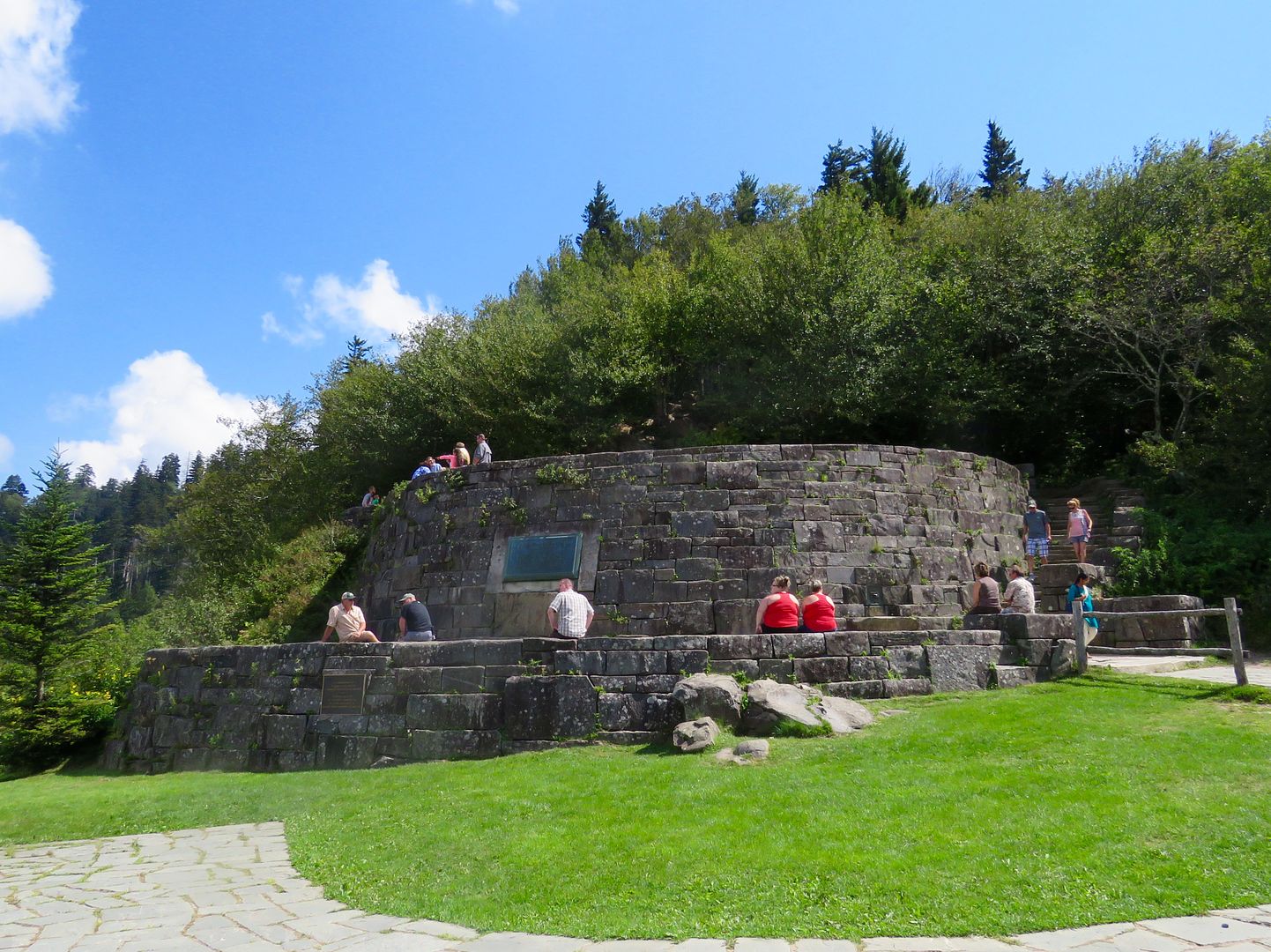
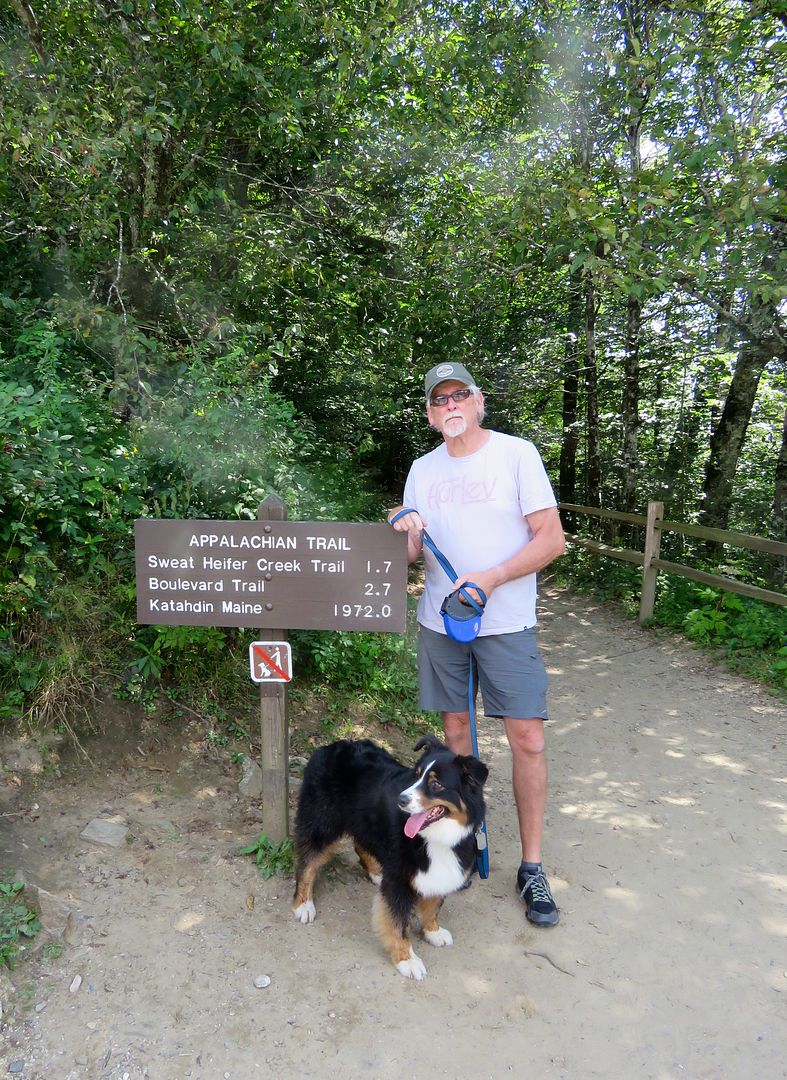




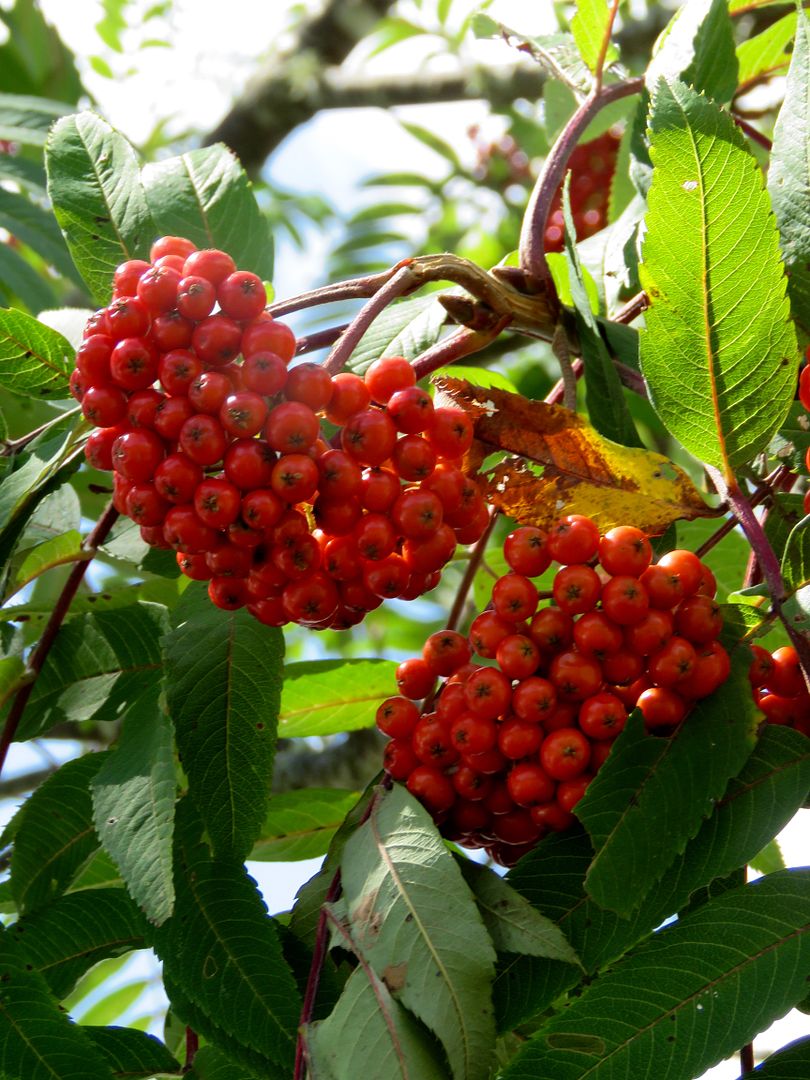
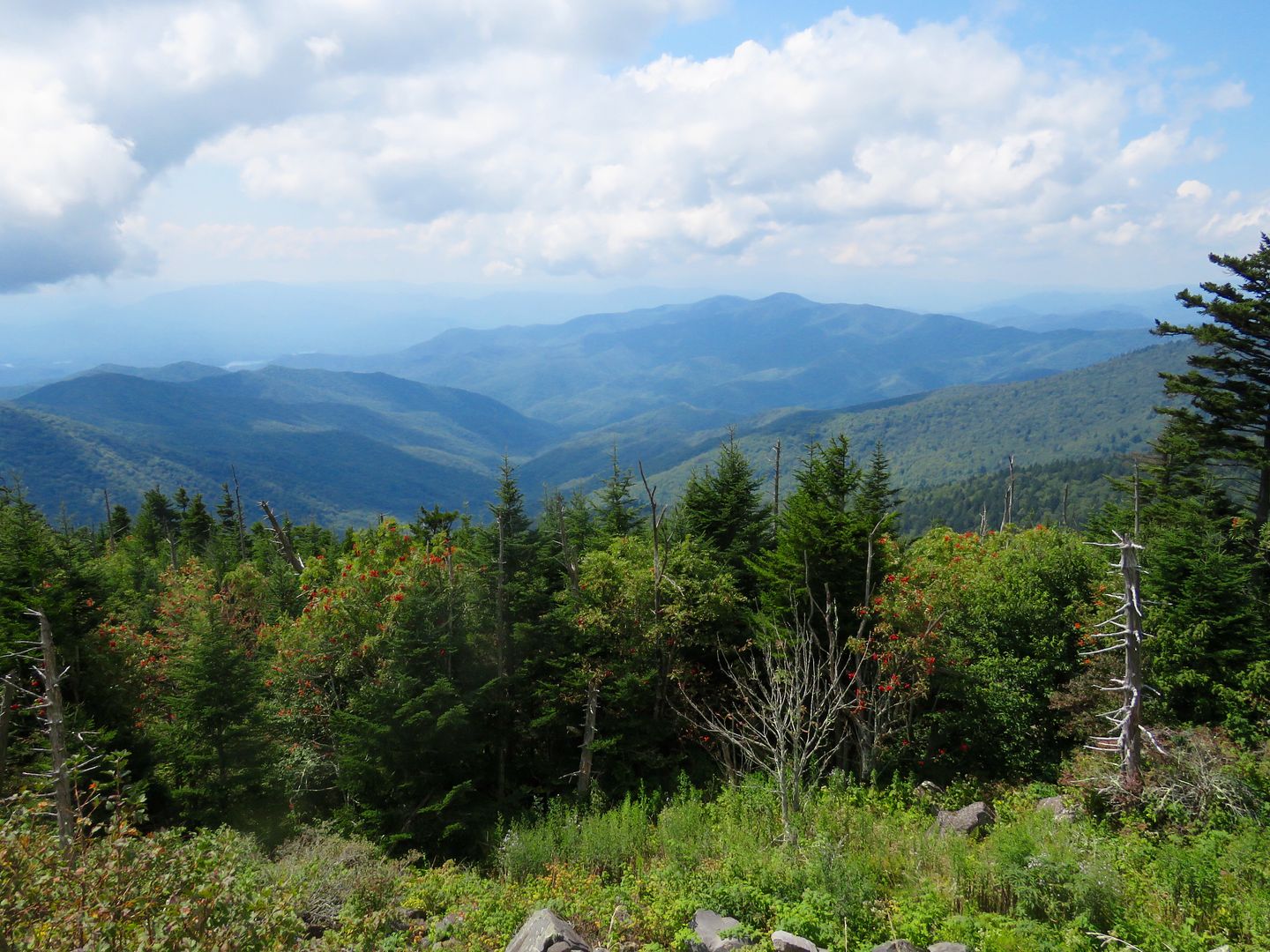

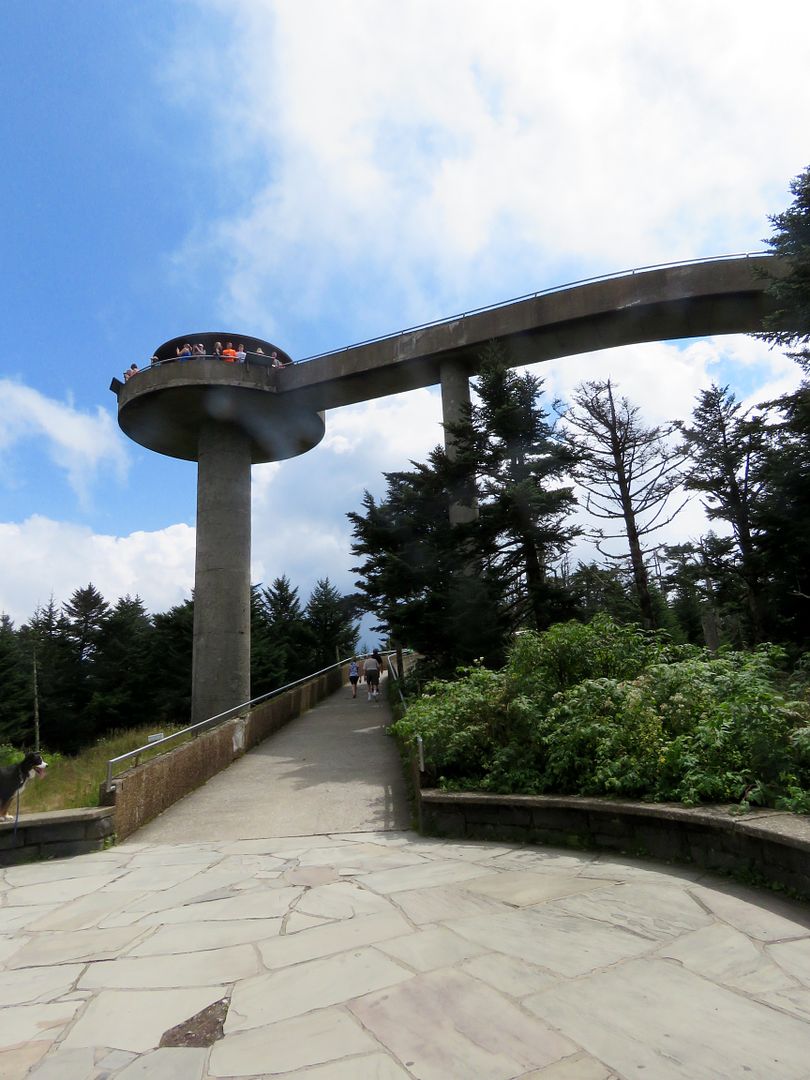




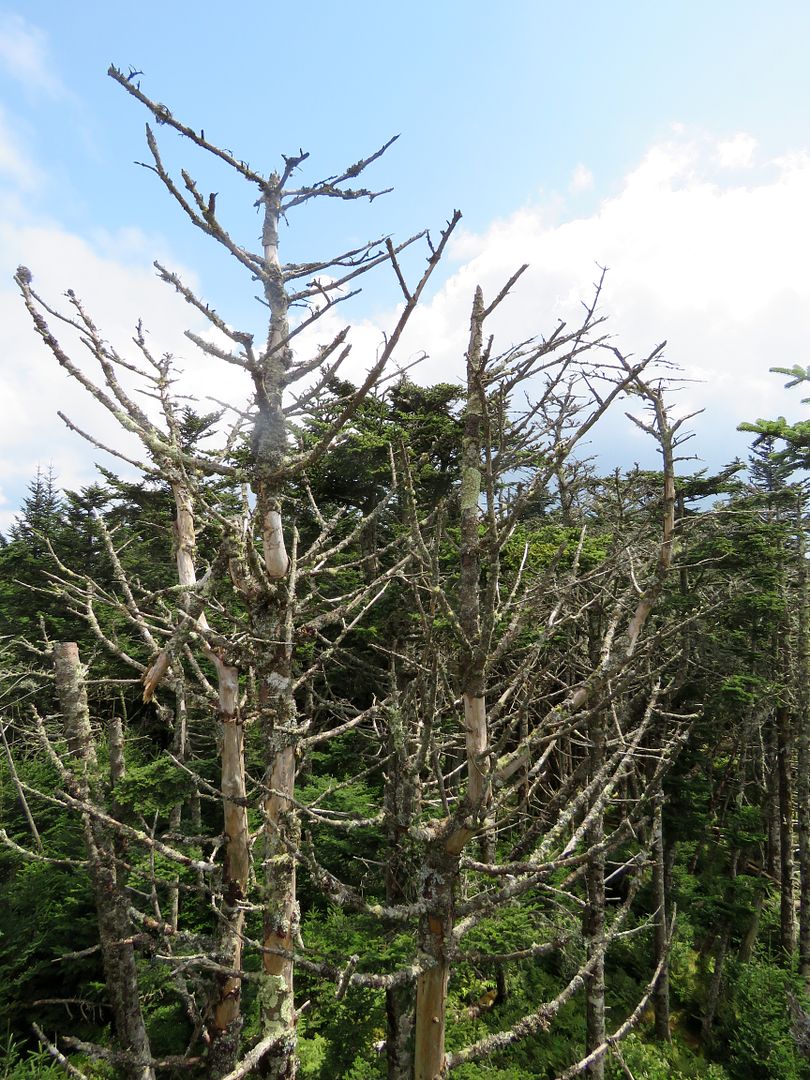

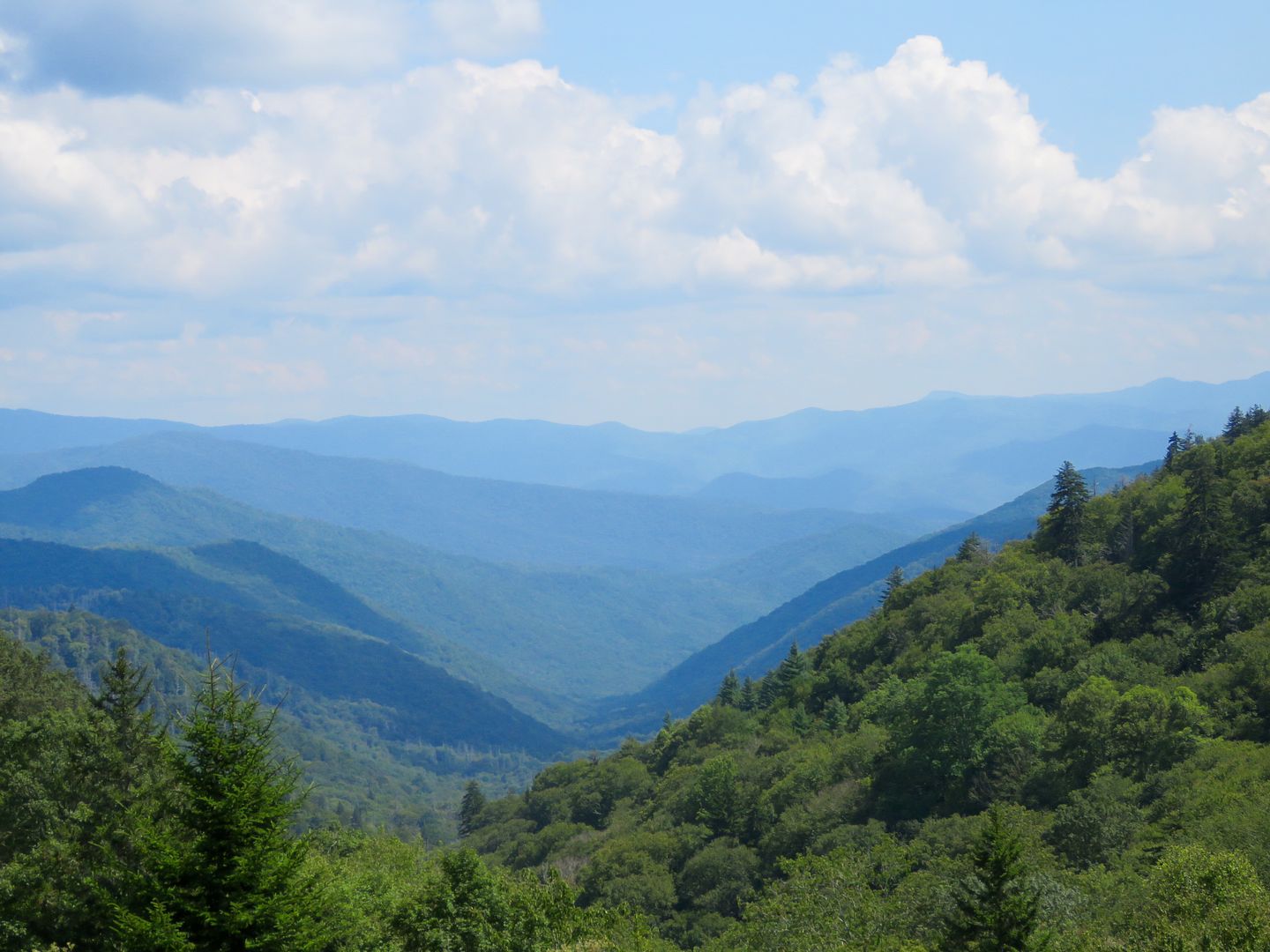
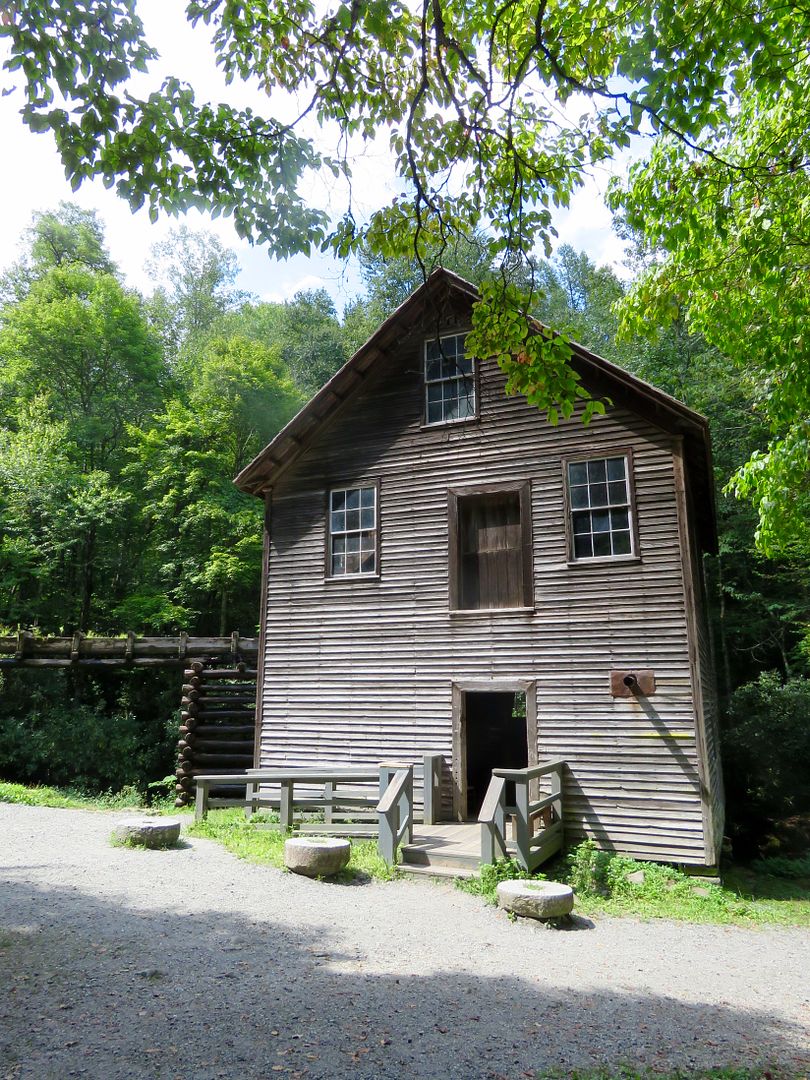
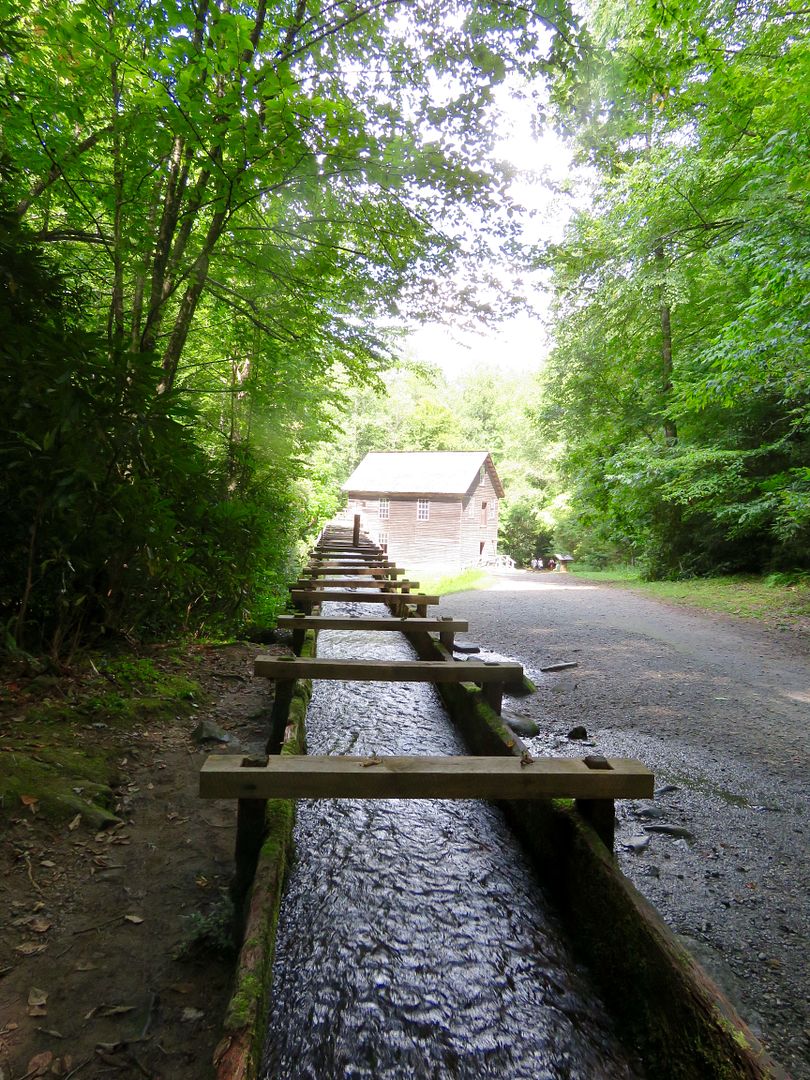

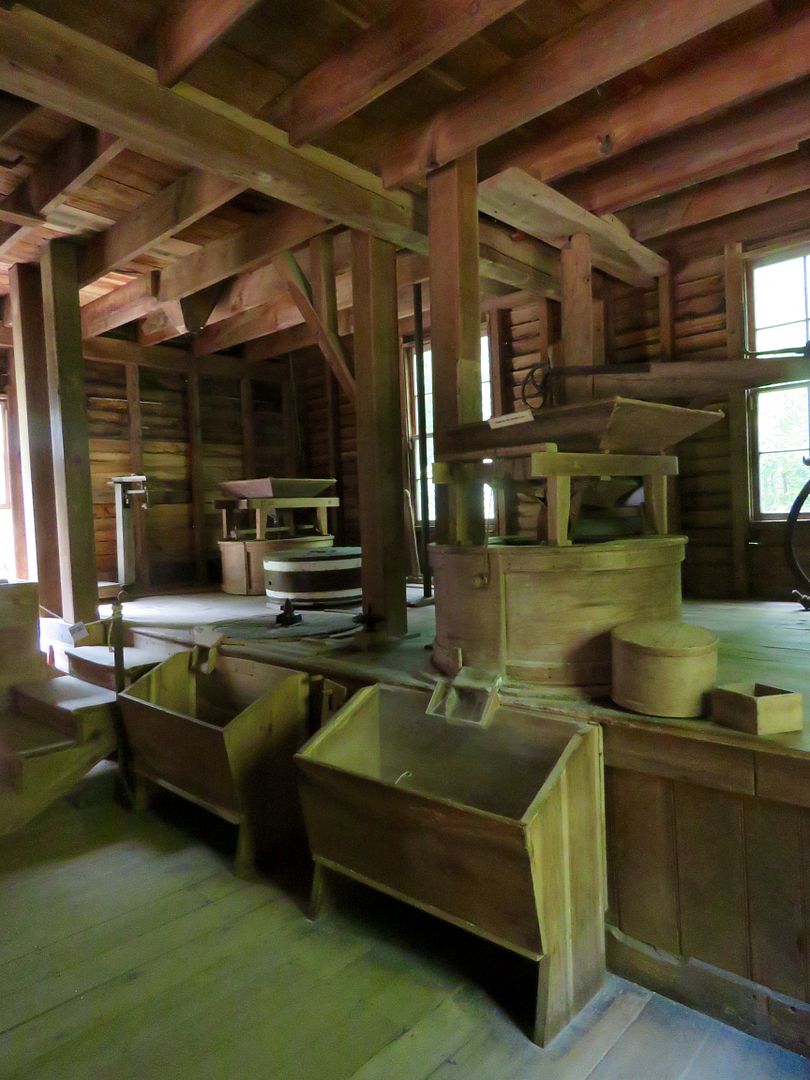

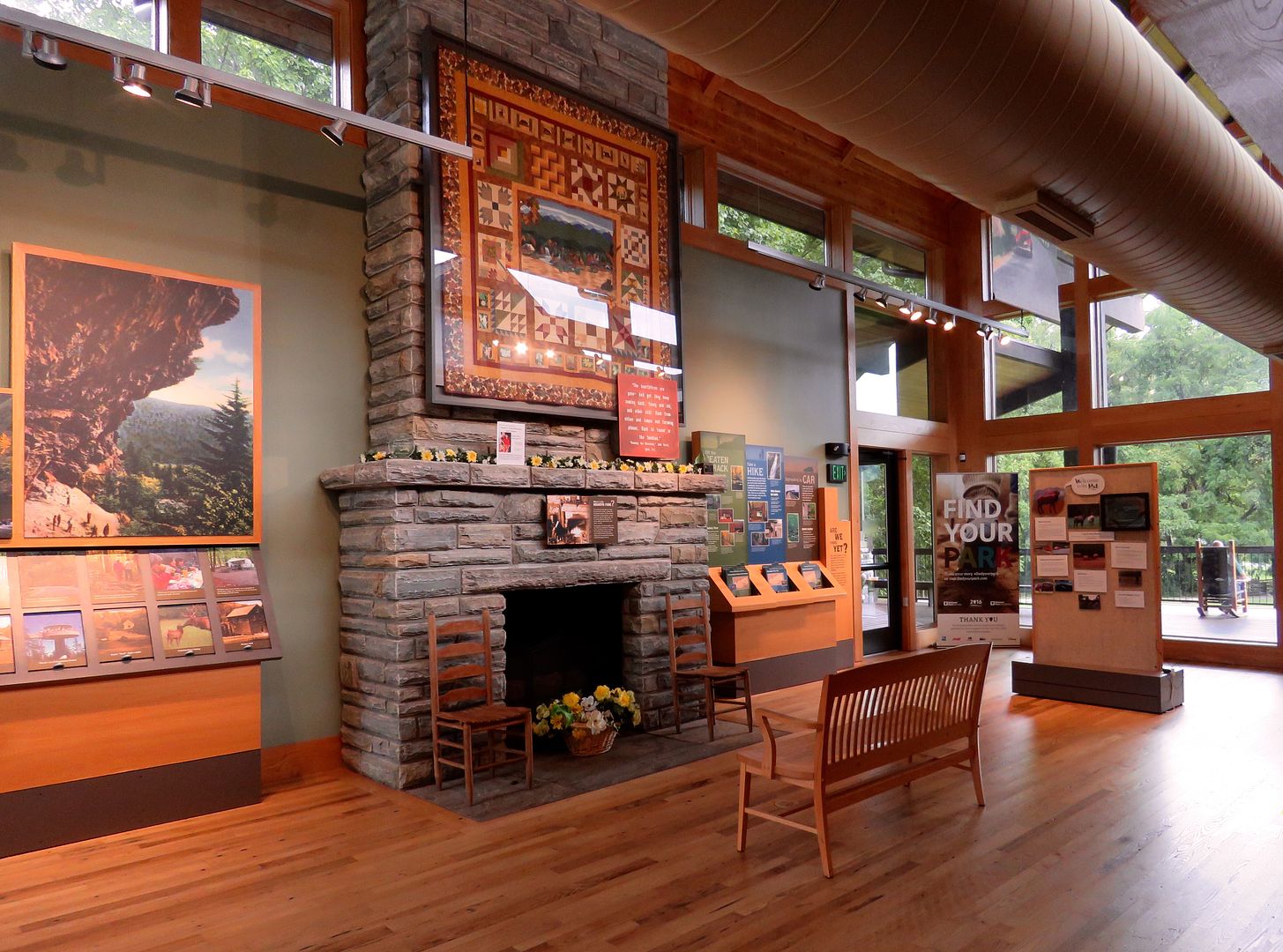
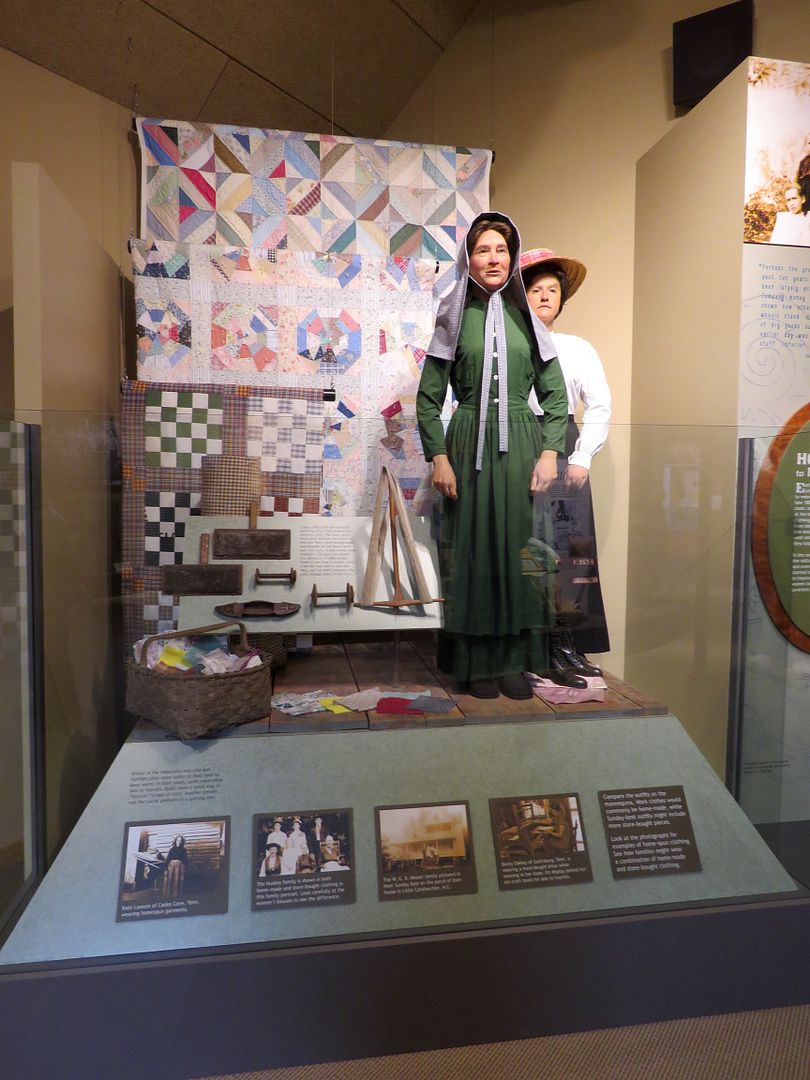
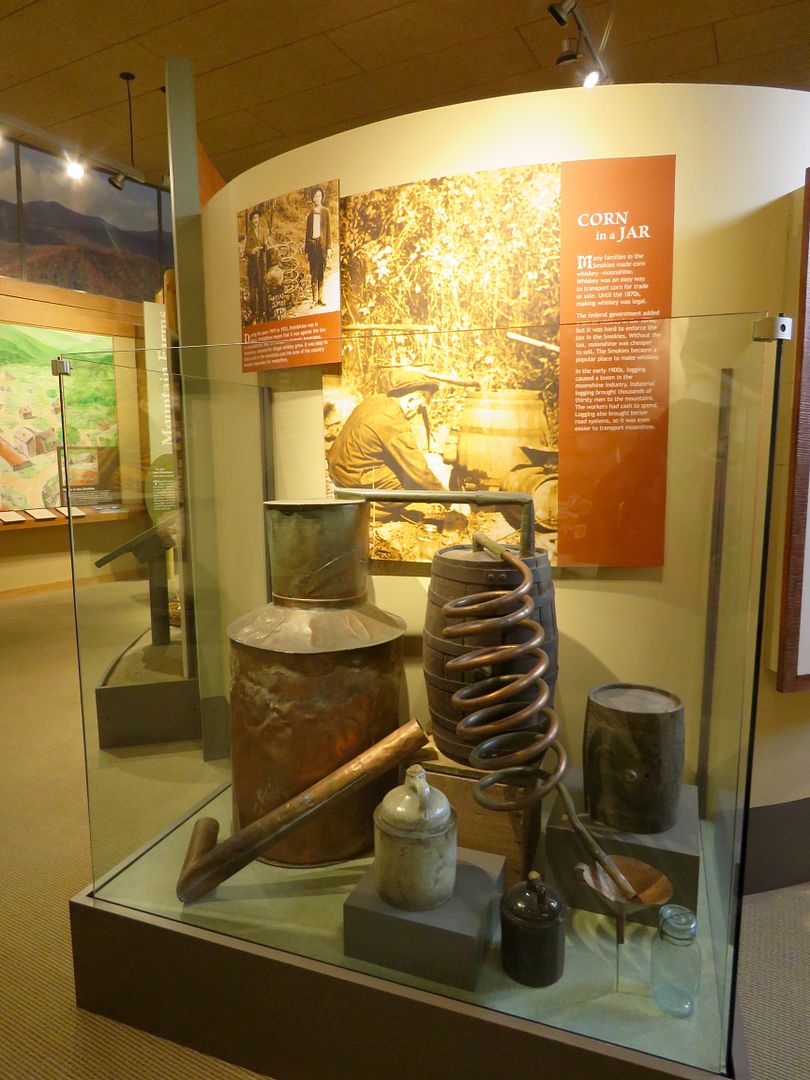
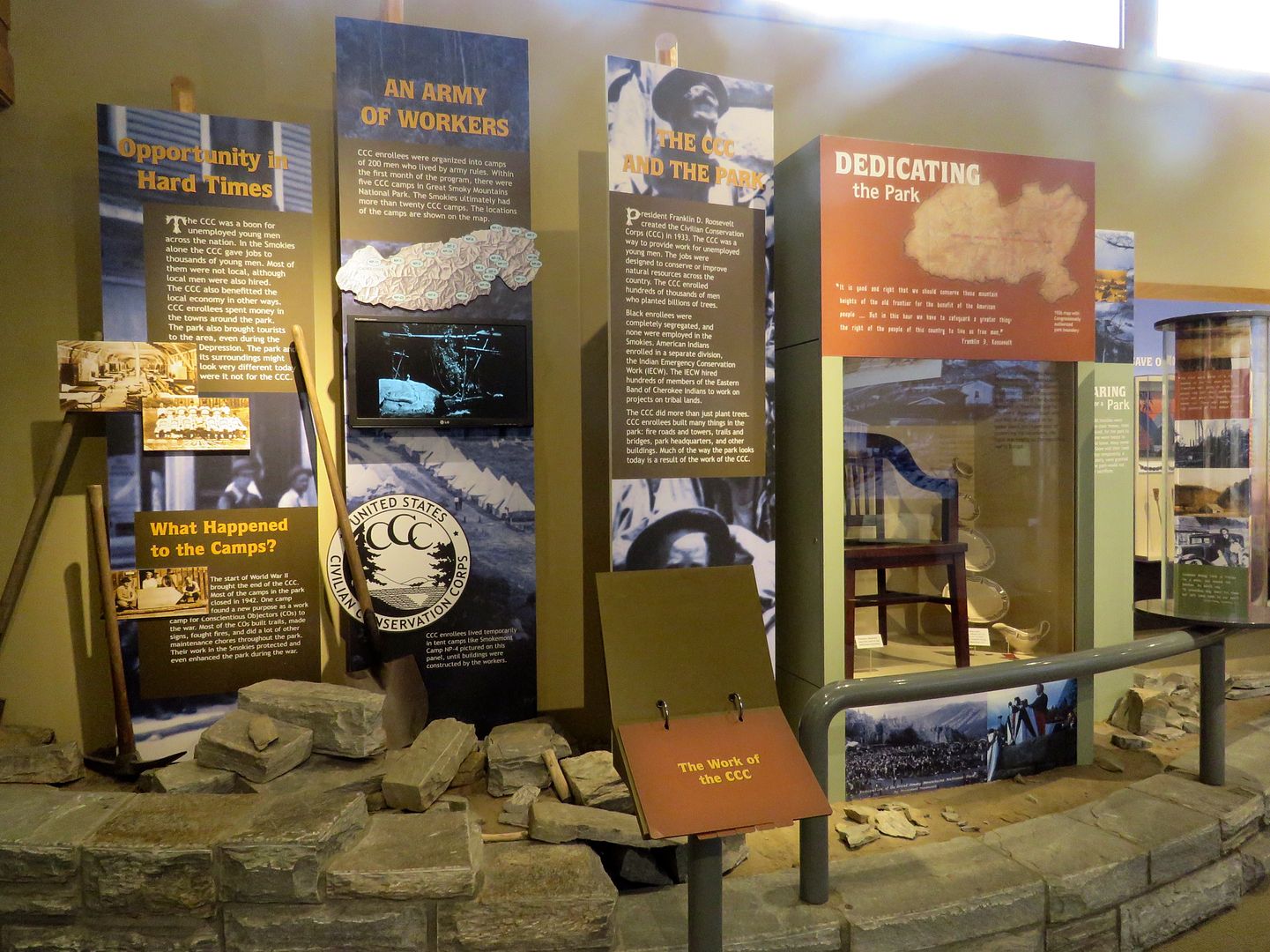
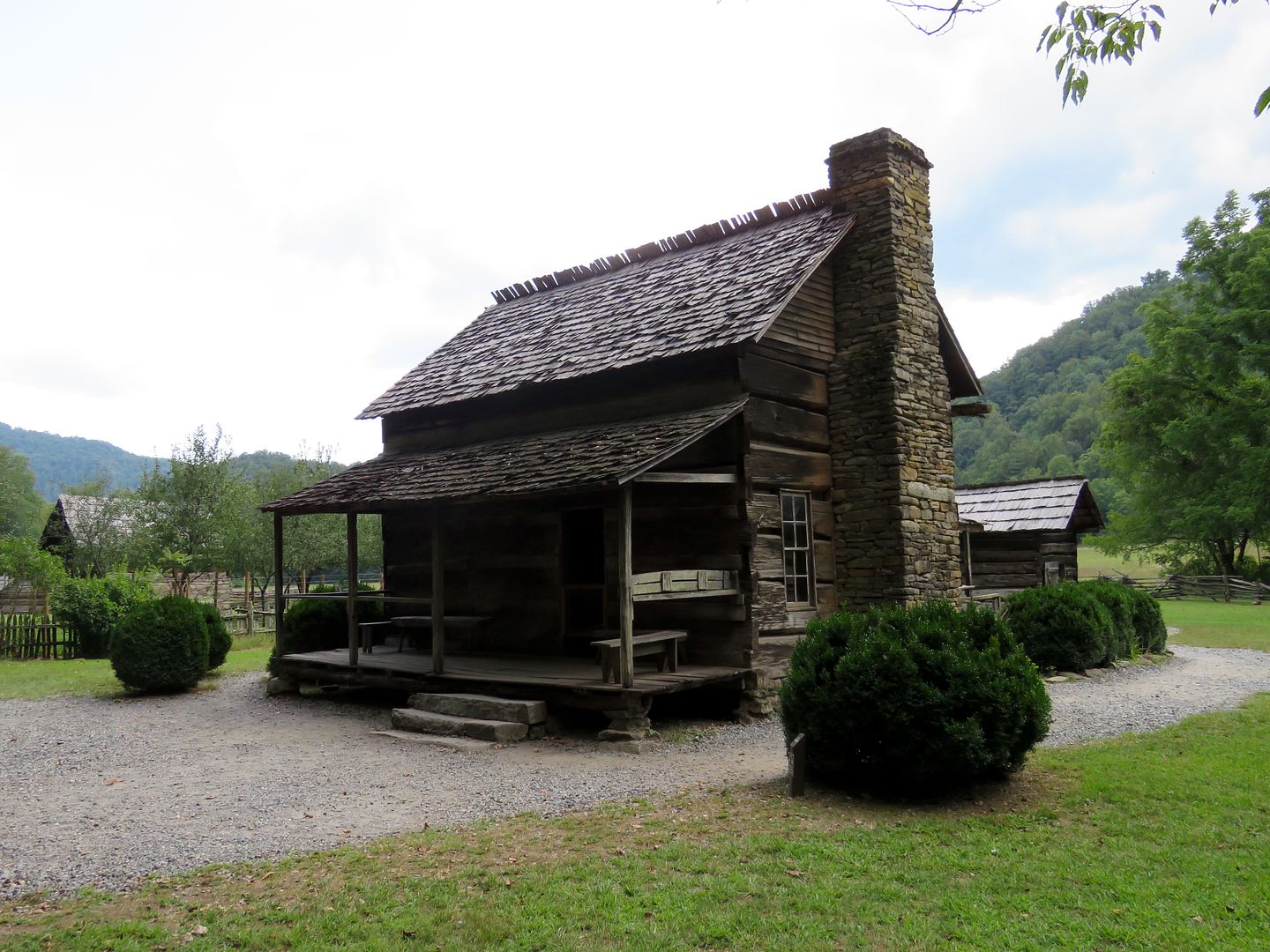
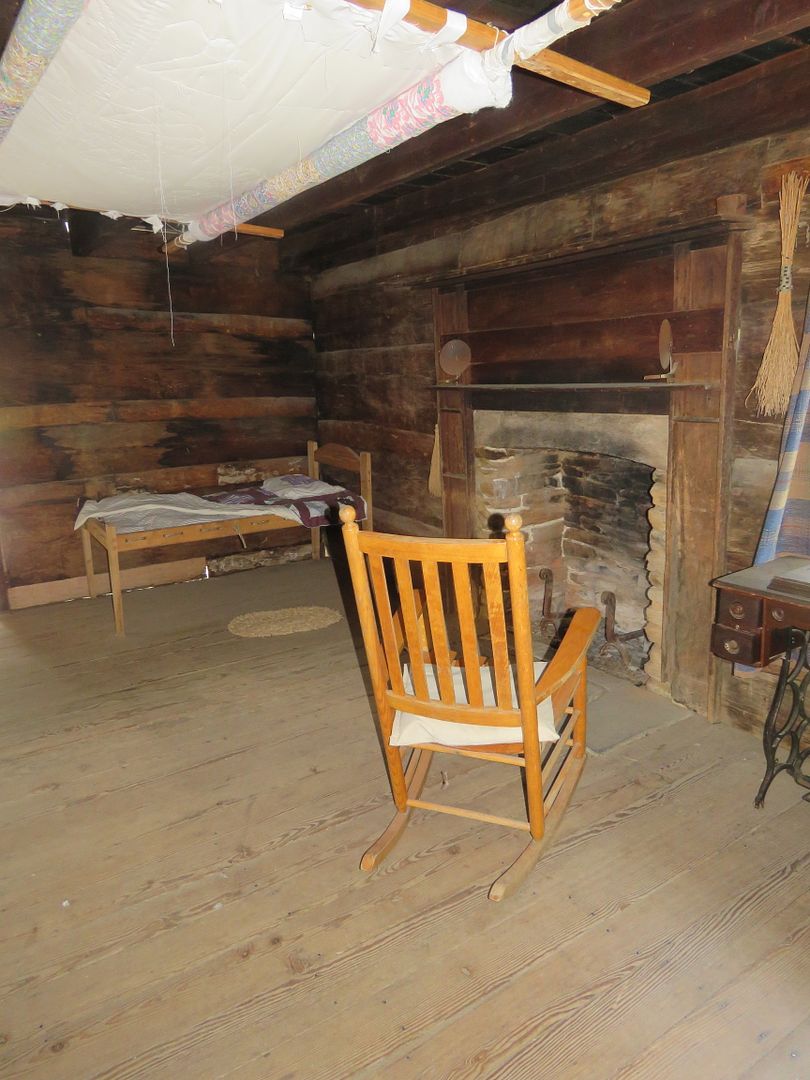
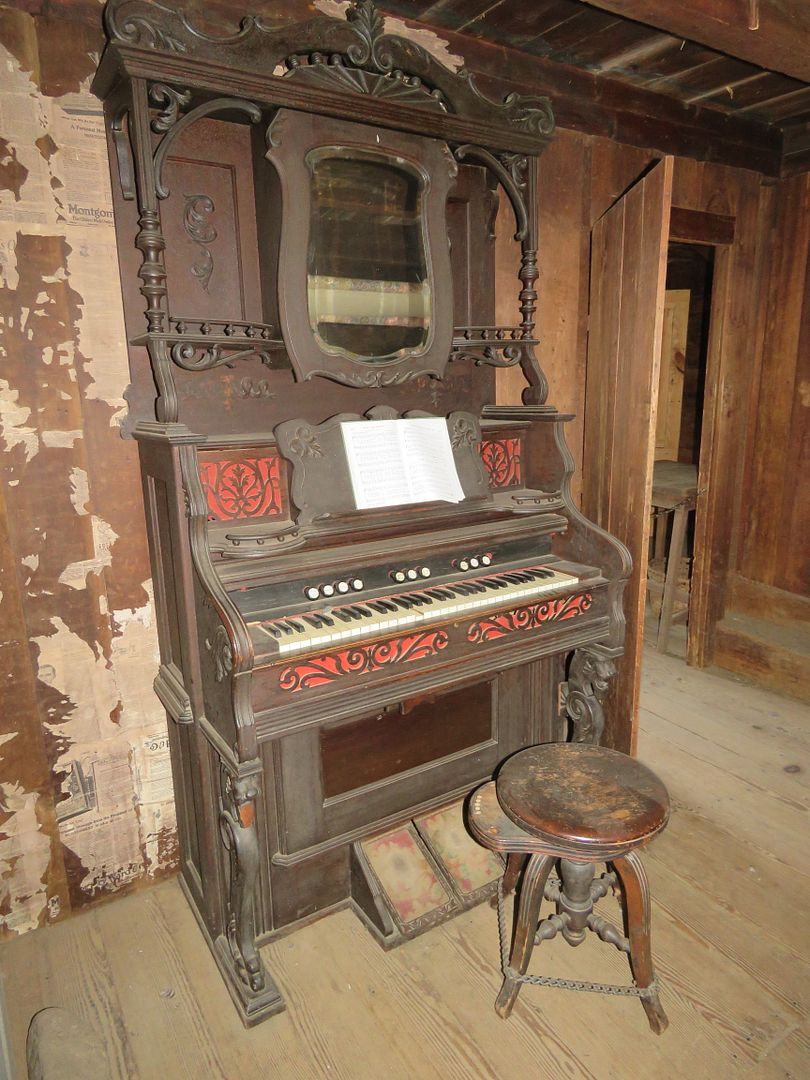
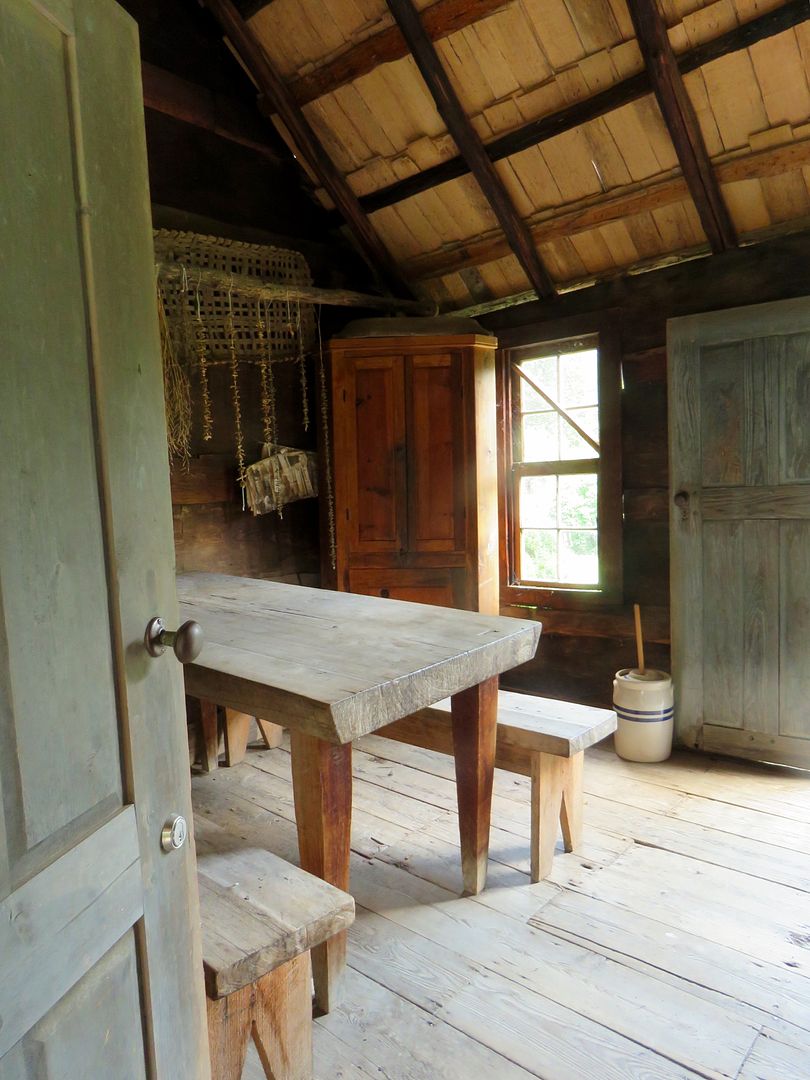
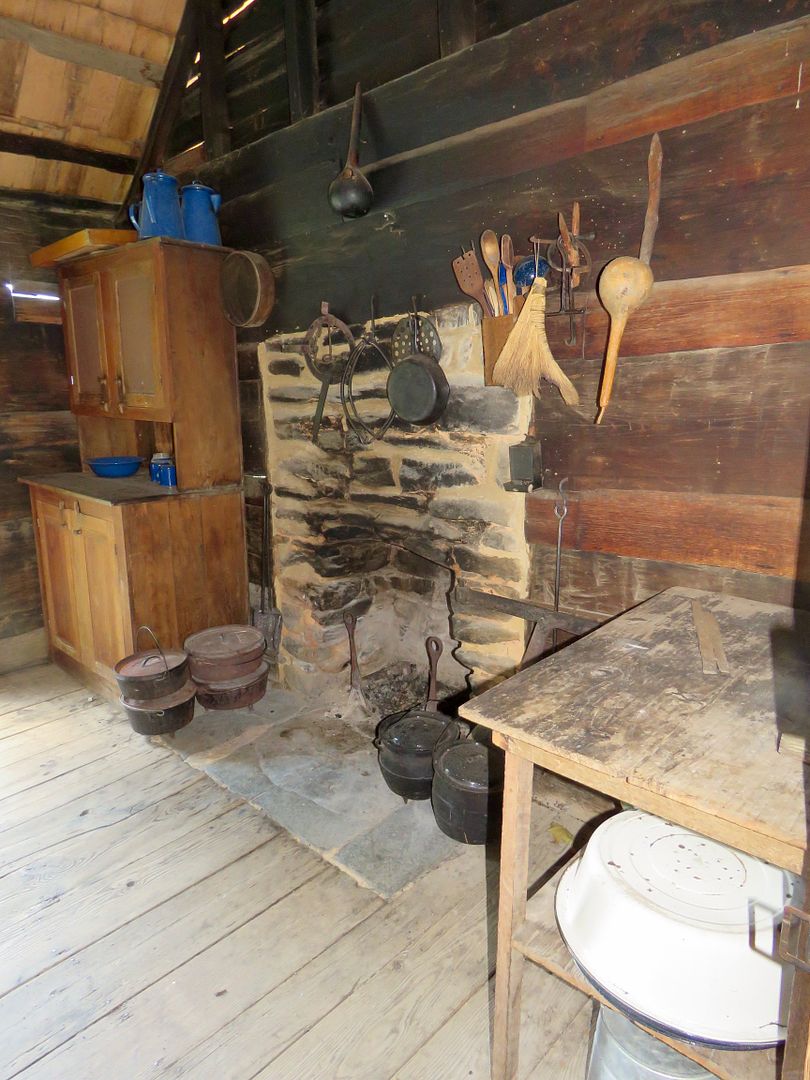
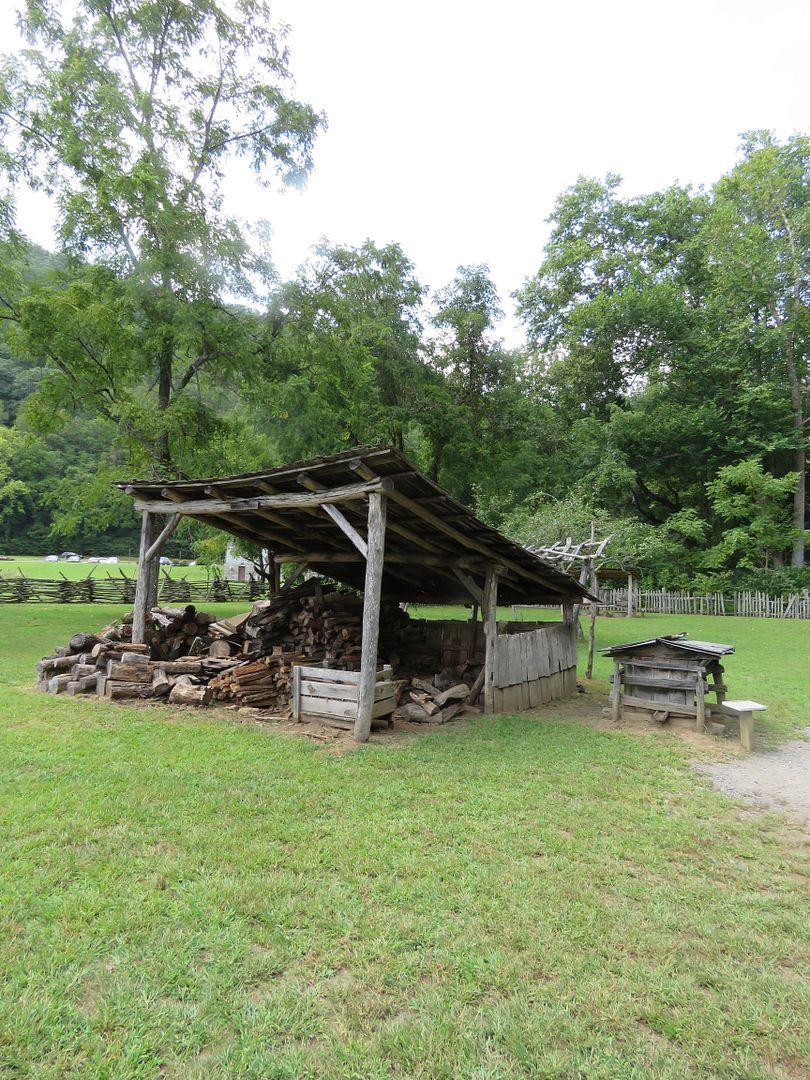

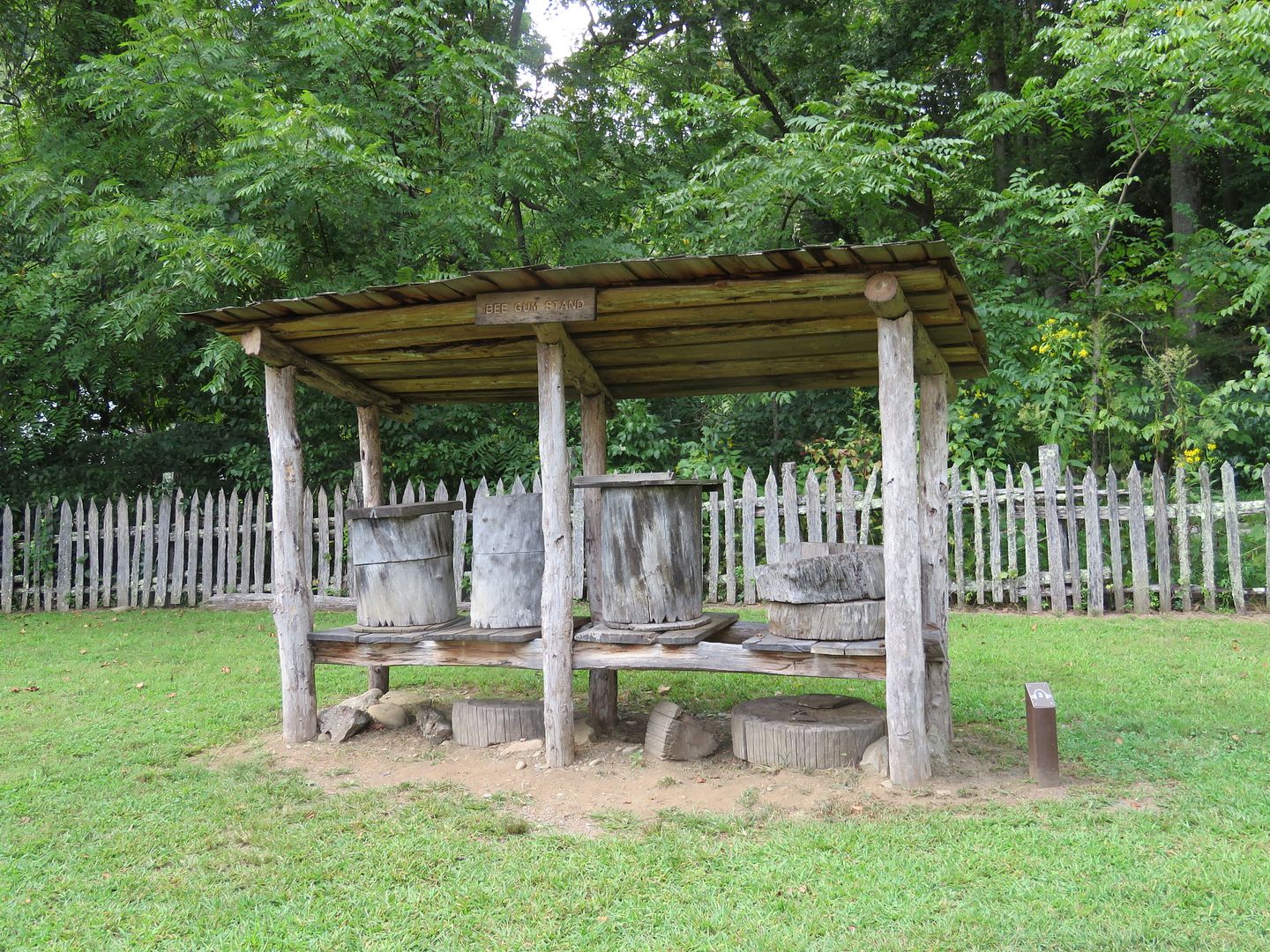
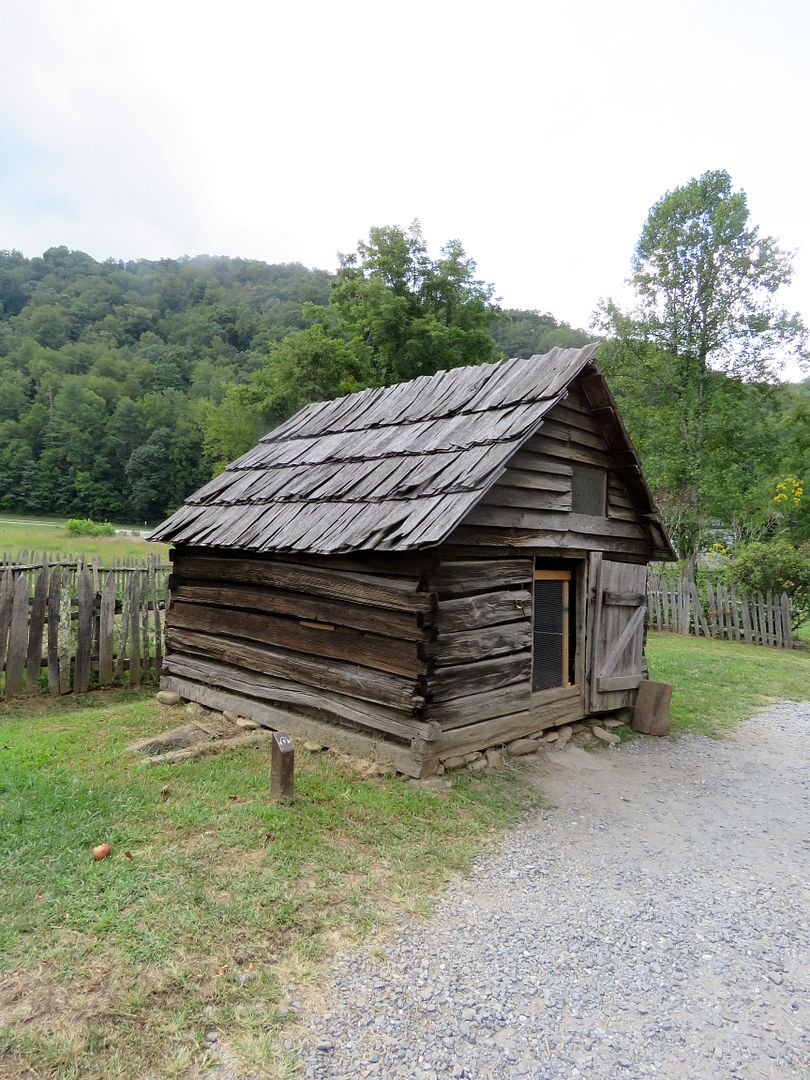
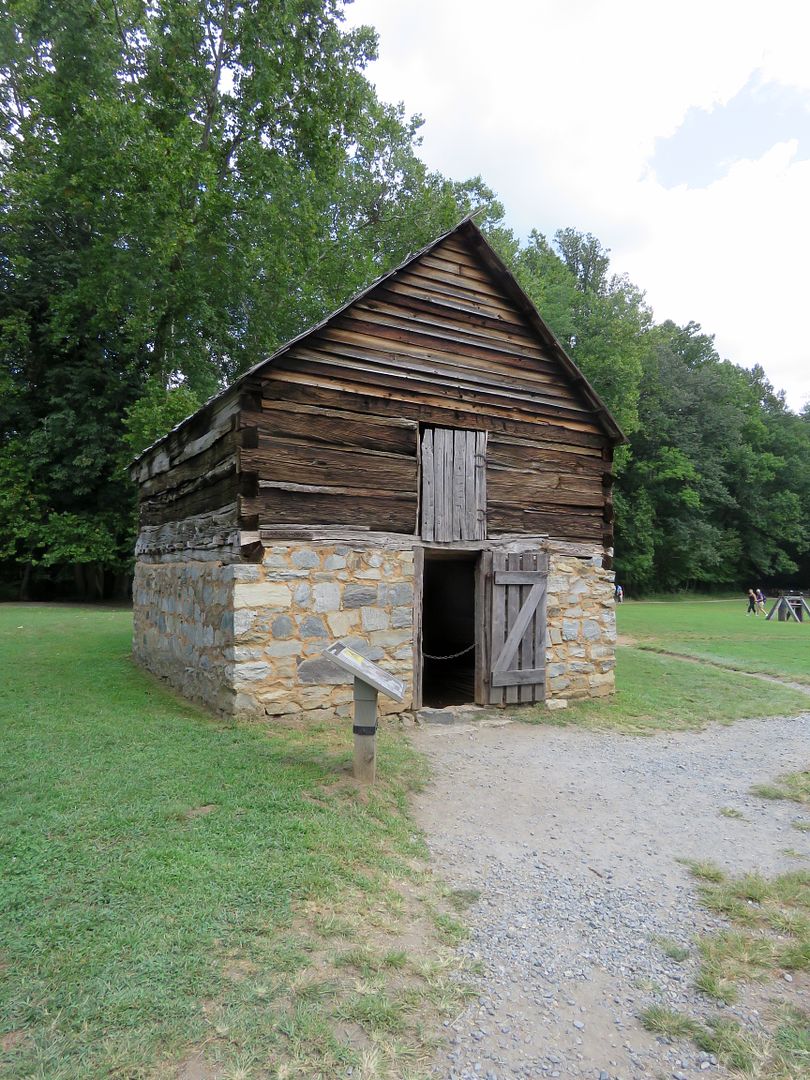
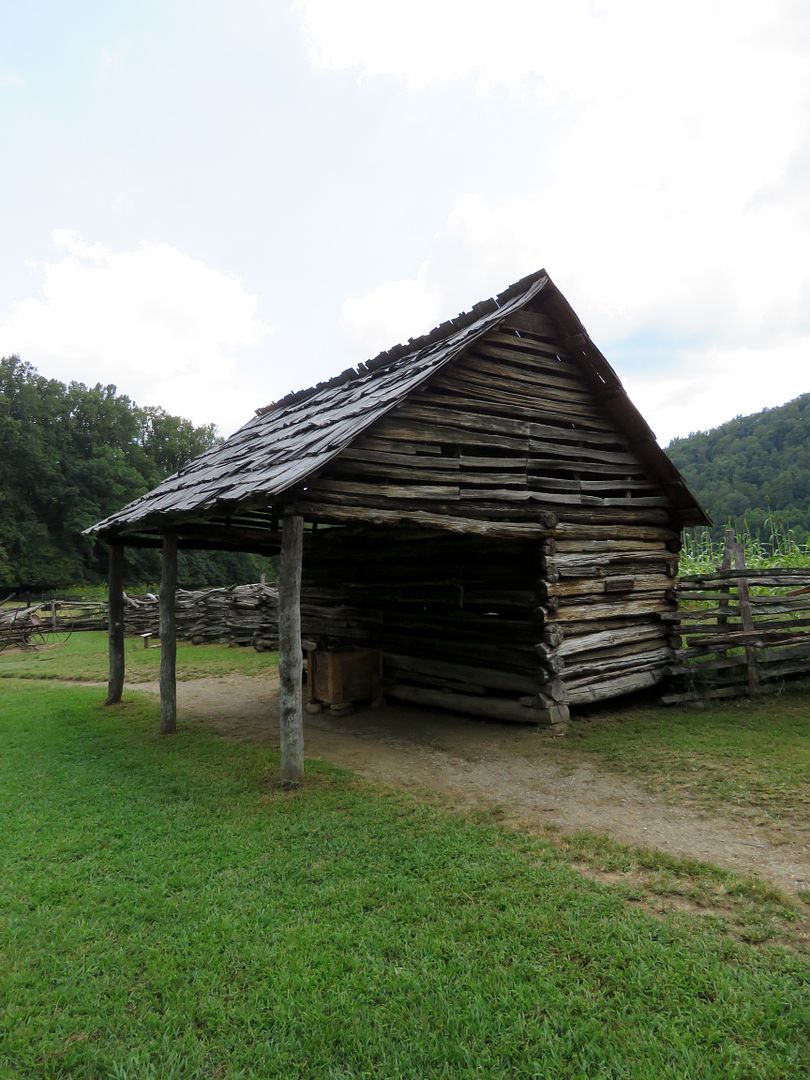


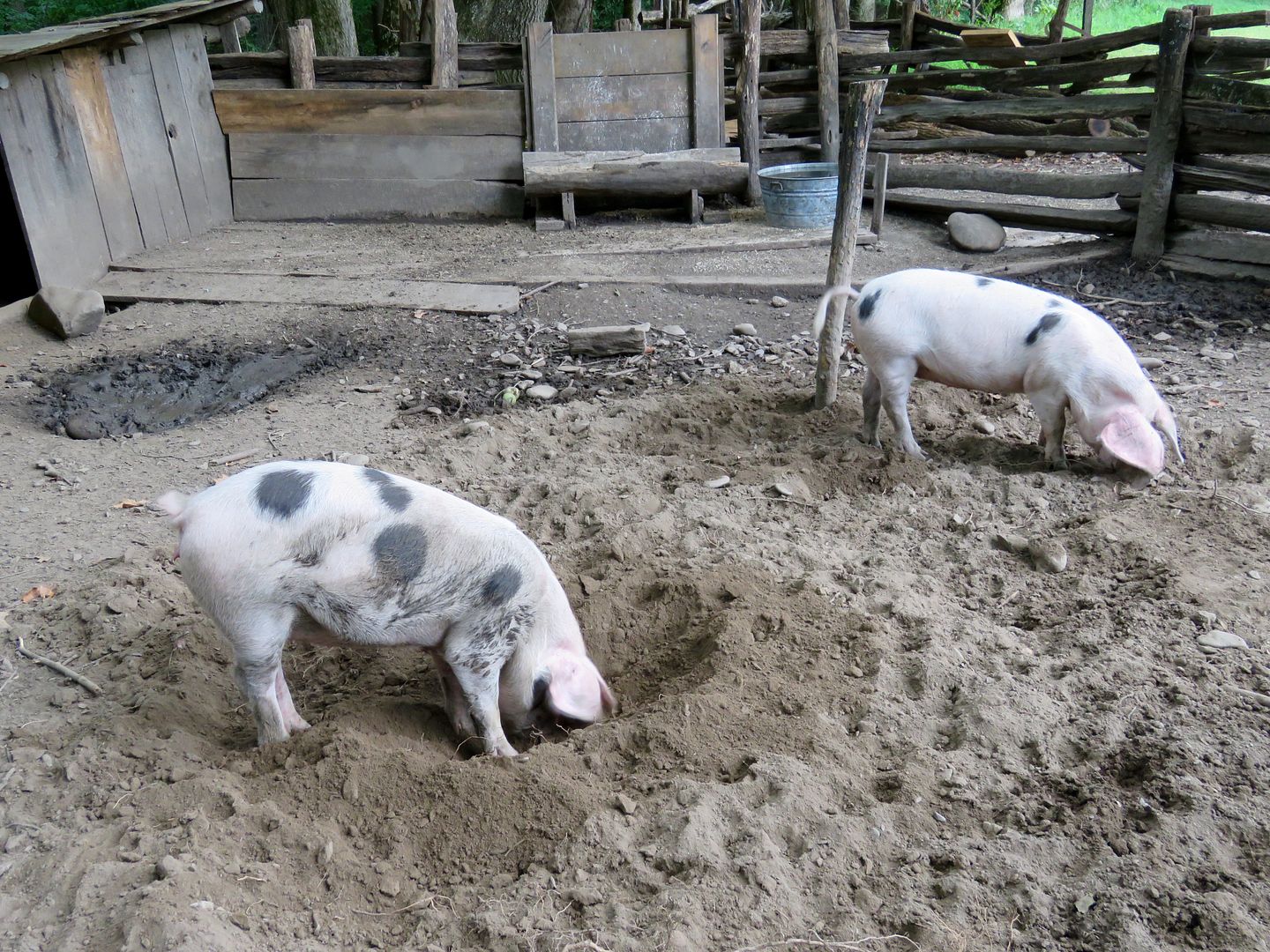

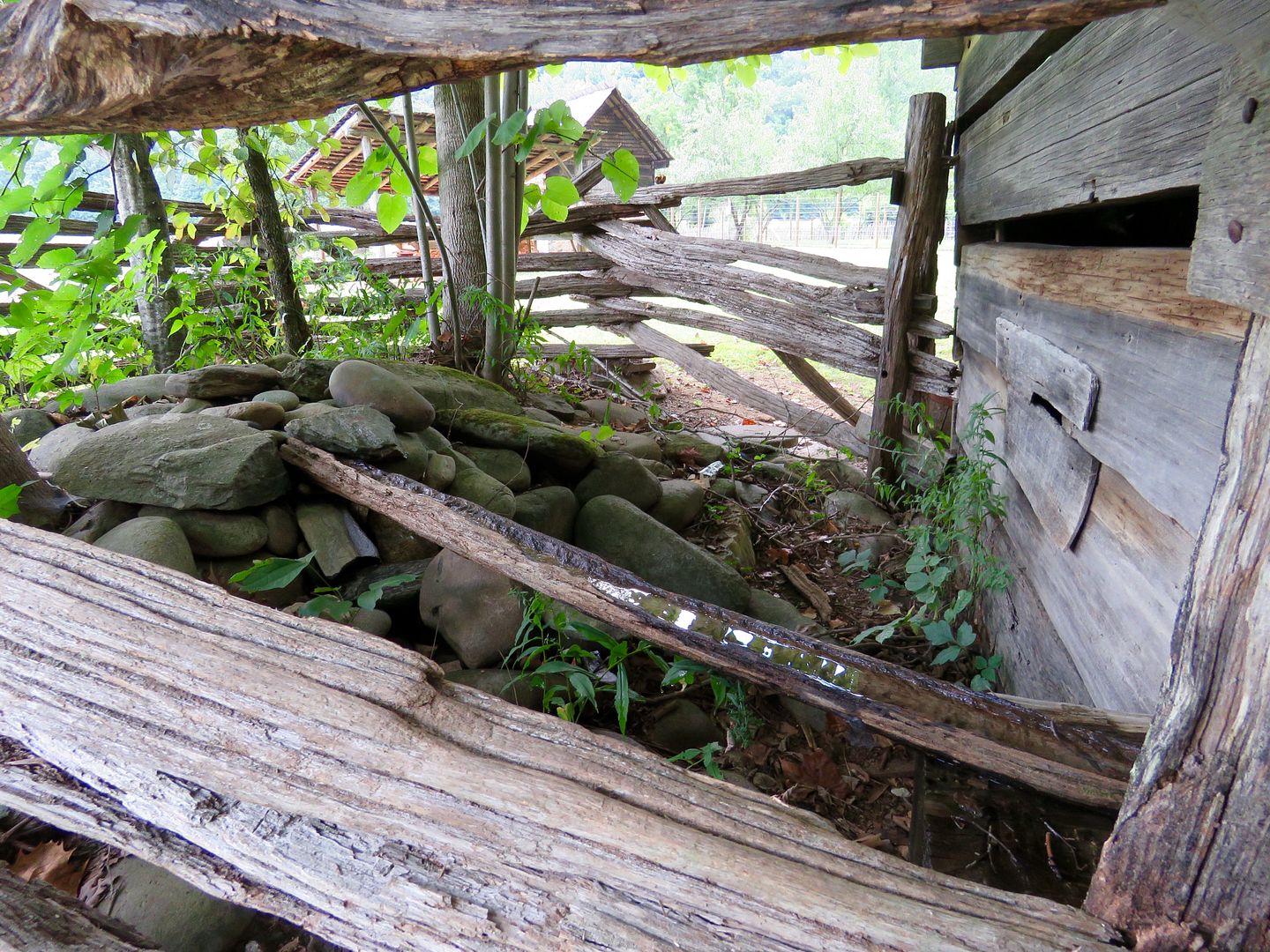

No comments:
Post a Comment